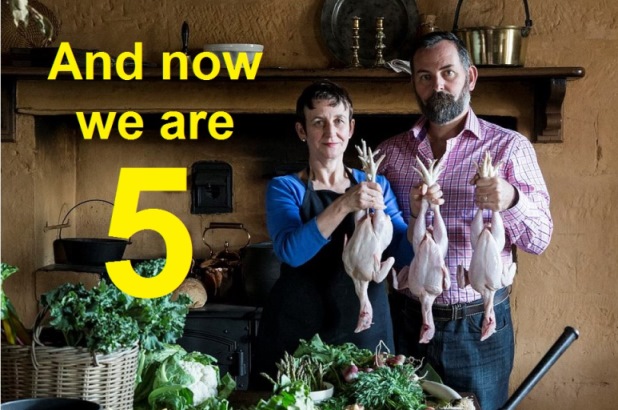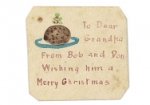The Cook and the Curator is turning five!
I know! We don’t look a day over 4! Today we’re looking back on half a decade of investigating the stories of Sydney Living Museums’ properties through their rich food history, your favourite stories and ours, and thanking those that got us here.
Are we sitting comfortably?
We started back in 2012 with a series of posts that introduced the blog and our museums, then went live. Here we are making that first step, and explaining just what it was we were setting out to do (we can just about watch it with a straight face):
Back then we actually thought we could churn out 2 posts a week! Ha! But now 5 years later this is our 320th post. Phew! In total we’ve had 235,017 ‘unique’ page views (and just by reading this you’ll have bumped that figure up by one).
Early accolades
Within our first year we were thrilled to be nominated for the NSW Premiers History Award: the judges wrote:
The Cook and the Curator: Eat Your History is an ingenious and engaging website and blog that brings the Sydney Living Museums’ historic houses to life through a kind of edible rediscovery of what the former inhabitants imbibed and consumed. recipes, anecdotes, artifacts, fabulous research and surprising facts all channeled through the past and present of the Historic Houses to make a delicious mix which is decidedly ‘moreish’. The website (produced and designed by Jay Smith and Sarah Christensen prospectively) is attractive and user-friendly.
The passion of both Jacqui Newling, The Cook, and Scott Hill, the Curator, for this endeavor is infused throughout the project and the tone is one of eager exploration and discovery, which is infectious for its audience. we learn, care of Mrs Beeton’s Household Management for Colonial Families, that convict staff tears (or ‘lachrymations’) are a potential, if tricky, substitute for salt in damper; an experiment with a volunteer ‘scullery maid’ (an assistant curator) is apiece of colonial history that is hard to prise from one’s mind. The project is a pleasure and a delight to partake in.
The blog received the Judges’ Special Award at the MAPDA awards; SLM:Food was launched; and the exhibition Eat our History: a Shared Table opened! That was a HUGE year!
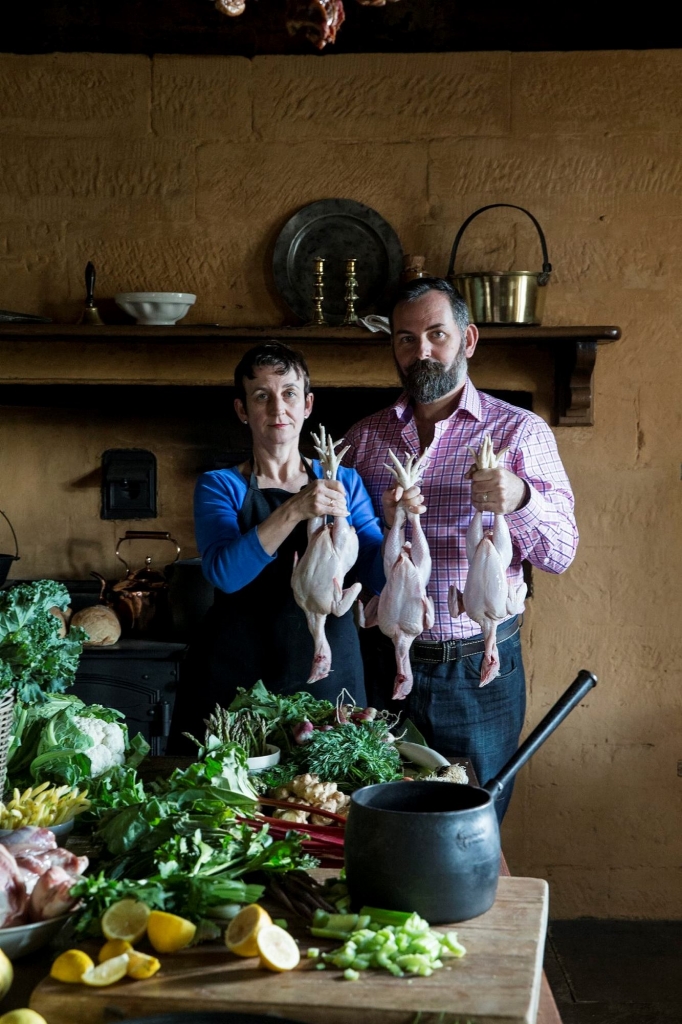
Have chicken will curate! Photo (C) James Horan for Sydney Living Museums
It’s nice to meet you
Blog writing is a strange medium sometimes – you never really know who’s out there in the blogosphere. We love it when you comment, but compared with our readership, we only receive a few. Our stats give us a vague idea however:
Where are our readers? 71% of you are from Australia, followed by the USA, UK, Canada, that mysterious nation of ‘not set’, then New Zealand, India, South Africa (who spend the longest time reading each article!), France and the Philippines. In fact we’ve quite a bit of interest from overseas museums and scholars – it’s nice to know our reach extends beyond the Antipodes.
Your favourite articles? It gave us a chuckle to see that it was the very prosaic “how to sterilise a jam jar” (VERY popular with all of you US readers!). Anything to do with convict life is an ongoing hit, from First Fleet Fare to building a wall with shelly mortar. Seasonal hits like puddings, and who’d have guessed that making a rum punch or a cocktail would be so popular! Its also encouraging and gratifying for us to see that longer articles are being read all the way through. When we started this blog a huge amount of thought went into post length and depth of content, and we think we’ve got the mix right – but rather than rely on ‘stats’ and ‘analytics’ let us know your favourites…
The infamous ‘calf’s-foot geyser’ incident…
If there’s one episode that is really stuck in our minds its the infamous calves foot incident of 2015… Making videos to accompany the Eat Your History: A Shared Table exhibition and provide blog content was a big endeavor in our early days. Along with pineapples an early obsession we had was jelly – its painstaking production and social status, inspired by the rows of fabulous copper moulds at Vaucluse House. Jacqui was determined to produce jelly from scratch the traditional way, using ‘a gang of calves feet‘. The glamour filming was done on the original stove at Vaucluse House, while the rest of the time the pot bubbled away in the adjacent modern staff kitchen. A warning to re-enactors – welded 19th century pots do NOT appreciate an electric cook-top!! With a loud bang the pot split, sending a geyser of “boiling stinking cow juice” (as it was later dubbed) all over the counter and floor. Grabbing a basin, half of the bubbling goo was saved, so days of Jacqui’s efforts stinking out her kitchen (it’s quite a distinctive smell) weren’t wasted. The clean up was truly horrible as the gelatinous mess started to congeal on every surface.
What was saved was set in a mould, which we then battled to extricate. Filmed and played backwards, the red splodge was quickly dubbed ‘the alien jelly’:
April’s fool!
…Should you run out of common salt, the lachrymations of your convict staff will be found a suitable substitute when mixing dough for bread.
Isabella Beeton, Household Management for Colonial Families (London, 1845, 2nd edition. Rouse Hill Collection)
My own favorite posts have been for April Fools Day. It all started with a torrid tale (as mentioned by the judges, above) of convict staff being flogged to produce salt from their tears – backed up by no less an authority than Mrs Beeton (who knew!) and continued with calculations for how much weeping was require – a solid hour’s worth just might produce enough salt for a loaf of bread. The most recent was for the ‘lost language of cutlery’. I confess I’m waiting to see these referenced as real research despite the disclaimers.
With special thanks to…
As you can see, life in the SLM food and wine department is one long picnic! (complete with chickens):
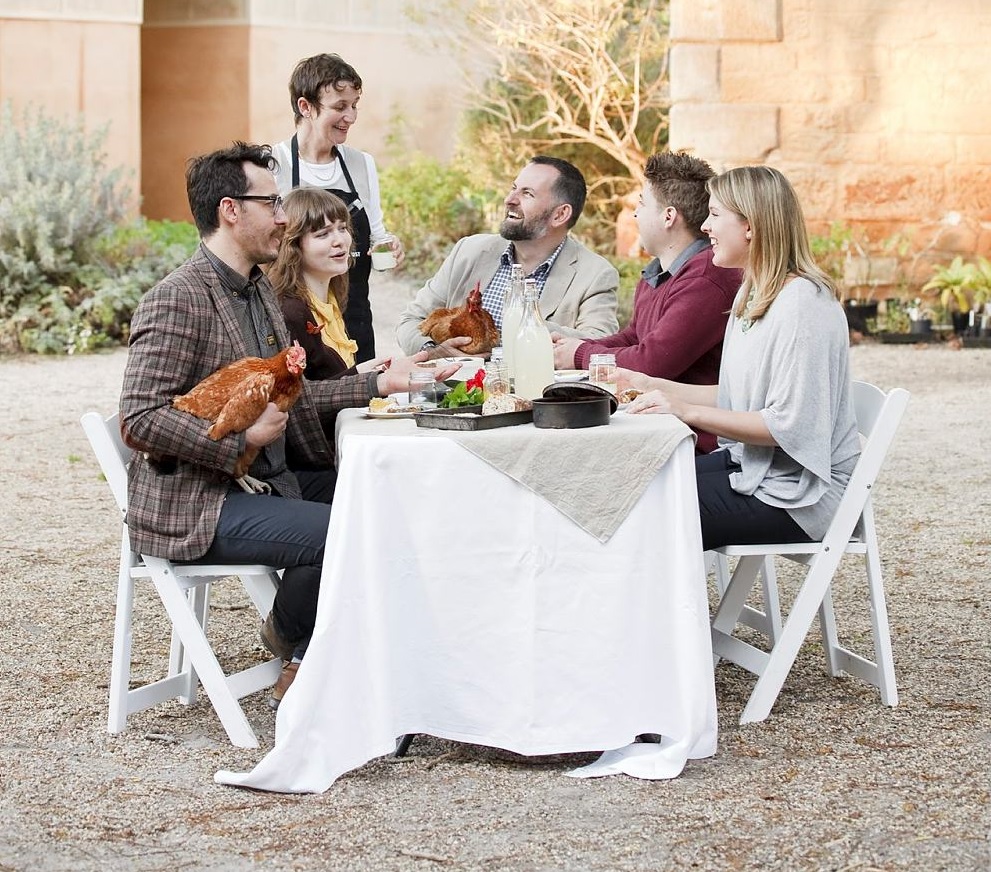
Its one long picnic. Photo (c) James Horan for Sydney Living Museums
When we first went live Jacqui and I thanked all those whose efforts brought this project to fruition, and we’d like to repeat those words now:
The Cook and the Curator is the result of an inspiring collaborative effort from our colleagues at SLM. Now that it feels like the canapés have finally made it to the table (with many courses to follow!) we want to thank the staff at SLM, from our fellow curators to the teams of gardeners and guides at our houses, who have supported this project. We value their enthusiasm and encouragement – and thank them for cleaning up their kitchens and staff rooms when we left them in chaos!
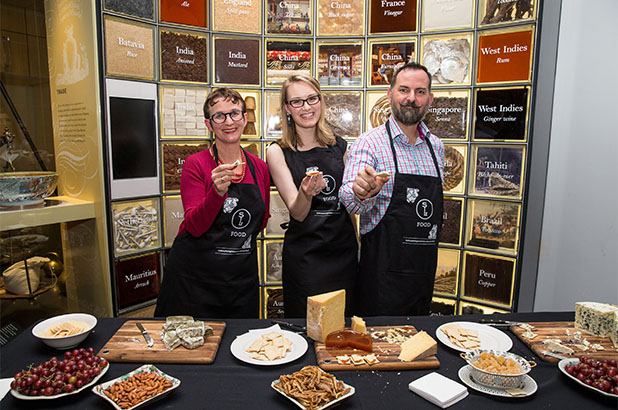
The Cook, Curator and Assistant Curator Alysha Buss. Photo © James Horan
Special thanks go to our original partners in crime, the truly wonderful Alysha Buss (who kept us sane), designer Sarah Christensen (for the award-winning design of the blog), Ondine Evans and Tim Birling-Butcher (who kept us online and glitch-free), Jay Smith (who gets desperate phone calls when technical things don’t work), Beth Hise for (championing the cause), and Rhiain Hull (who translated pudding-stained pages into actual recipes); to Kieran Larkin, Anne-Louise Falson and Bob Wight for the exhibition; and to all those behind the scenes of Jacqui’s ‘Eat Your History’ book published in 2015! Since then we’ve added all our guest writers, interns, and our dedicated volunteers who’ve chopped, diced, stirred and tested for us!
Cheers everyone!
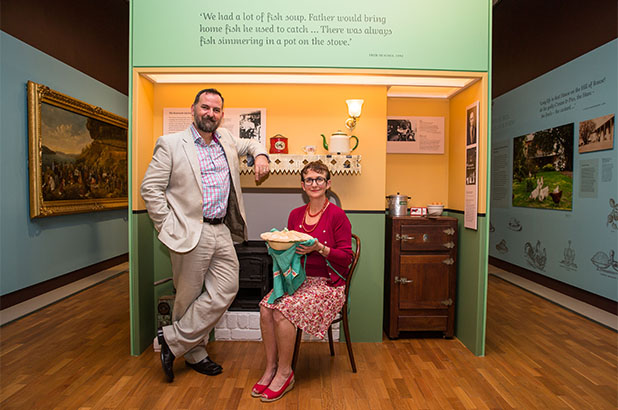
The Cook and the Curator at the Eat your history: a shared table exhibition. Photo © James Horan
The sharp eyed will notice there wasn’t a single food pun in this post. Eggstroardinary! And Tim promises us that there’s a blooper reel in the making.
